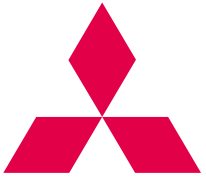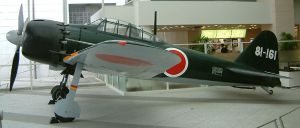Mitsubishi
- For information on Mitsubishi brand computer monitors, see NEC-Mitsubishi Electronics Display of America Inc. For the automotive corporation, see Mitsubishi Motors.
| Mitsubishi Group 三菱グループ | |

| |
| Type | Public (traded on the Tokyo Stock Exchange) |
|---|---|
| Founded | May 13, 1870 |
| Headquarters | |
| Industry | Conglomerate
|
The Mitsubishi Group (三菱グループ Mitsubishi Gurūpu), Mitsubishi Group of Companies, or Mitsubishi Companies is a Japanese conglomerate consisting of a range of autonomous businesses which share the Mitsubishi brand, trademark and legacy. The Mitsubishi group of companies form a loose entity, the Mitsubishi Keiretsu, which is often referenced in US and Japanese media and official reports; in general these companies all descend from the zaibatsu of the same name. A keiretsu is a common feature of Japanese corporate governance and refers to a collaborative group of integrated companies with extensive share crossholdings, personnel swaps and strategic co-operation. The top 25 companies are also members of the Mitsubishi Kin'yōkai, or "Friday Club", and meet monthly. The Mitsubishi.com Committee is meant to maintain the overall integrity of the brand through a portal web site.[citation needed]
History
The first Mitsubishi company was a shipping firm established by Yataro Iwasaki (1834–1885) in 1870. In 1873, its name was changed to Mitsubishi Shokai (三菱商会). The name Mitsubishi (三菱) has two parts: "mitsu" meaning "three" and "bishi" meaning "water caltrop" (also called "water chestnut"), and hence "rhombus", which is reflected in the company's logo. It is also translated as "three diamonds".[1]
The company bought into coal mining in 1881 by acquiring the Takashima mine, using the produce to fuel their extensive steamship fleet. They also diversified into shipbuilding, banking, insurance, warehousing, and trade. Later diversification carried the organization into such sectors as paper, steel, glass, electrical equipment, aircraft, oil, and real estate. As Mitsubishi built a broadly based conglomerate, it played a central role in the modernization of Japanese industry. [citation needed]
The merchant fleet entered into a period of diversification that would eventually result in the creation of three entities:
- Mitsubishi Bank (now a part of the Mitsubishi UFJ Financial Group) was founded in 1919. After its mergers with the Bank of Tokyo in 1996, and UFJ Holdings in 2004, this became Japan's largest bank.
- Mitsubishi Corporation, founded in 1950, Japan's largest general trading company
- Mitsubishi Heavy Industries, which includes these industrial companies.
- Mitsubishi Motors, the 6th largest Japanese auto manufacturer.
- Mitsubishi Atomic Industry, a nuclear power company.
- Mitsubishi Chemical, the largest Japanese chemicals company
World War II
The Mitsubishi Zero was a primary Japanese naval fighter in World War II. It was used by Imperial Japanese Navy pilots in the attack on Pearl Harbor and in kamikaze attacks until the end of the war. Allied pilots were astounded by its maneuverability, and it was very successful in combat until the Allies devised tactics to utilize their advantage in firepower and diving speed. Mitsubishi also built the "Raiden", a land-based interceptor.
As well as building prominent fighters, Mitsubishi also built many of Japan's most famous bombers of the war, such as the G3M, the G4M, the Ki-21, and the Ki-67. During the 1930s, Mitsubishi had also built the single-engined Ki-35.[2]
During the Second World War, Mitsubishi manufactured aircraft, including the famous Zero that was used in the attack on Pearl Harbor on December 7, 1941 and many other occasions. Also, like many other large Japanese corporations at that time, it made use of slave labor from Allied POWs and the Japanese captured territories, like Korea and China. With poor working conditions, many people died during this period. Approximately twenty thousand Korean slave laborers died in the atomic bombings of Hiroshima and Nagasaki by the United States.
In a statement, the Mitsubishi Corporation says that forced labor is inconsistent with the company's values, and that the various lawsuits targeting Mitsubishi are misdirected. Instead, a spokesman says the Mitsubishi of World War II is not the same Mitsubishi of today. The conglomerate also rejected a Chinese slave labor lawsuit demand by saying it bore no responsibility since it was national policy to employ Chinese laborers."
New era
Mitsubishi participated in Japan's unprecedented economic growth of the 1950s and 1960s. For example, as Japan modernized its energy and materials industries, the Mitsubishi companies created Mitsubishi Petrochemical, Mitsubishi Atomic Power Industries, Mitsubishi Liquefied Petroleum Gas, and Mitsubishi Petroleum Development.
The traditional Mitsubishi emphasis on technological development was in new ventures in such fields as space development, aviation, ocean development, data communications, computers, and semiconductors. Mitsubishi companies also were active in consumer goods and services.
In 1970, Mitsubishi companies established the Mitsubishi Foundation to commemorate the centennial anniversary of the founding of the first Mitsubishi company. The companies also individually maintain charitable foundations. Mitsubishi pavilions have been highlights of expositions in Japan since the historic EXPO'70 in Osaka in 1970.
As of 2007, Mitsubishi Corporation, a member of the Mitsubishi Group, is Japan's largest general trading company (sogo shosha) with over 200 bases of operations in approximately 80 countries worldwide. Together with its over 500 group companies, Mitsubishi employs a multinational workforce of approximately 54,000 people. Mitsubishi has long been engaged in business with customers around the world in many industries, including energy, metals, machinery, chemicals, food and general merchandise.
Mitsubishi Motors reached 1.3 million cars of total production in 2007.
Mitsubishi companies
Core members
- 3 Diamonds Seafood Co.
- Asahi Glass Co.
- The Bank of Tokyo-Mitsubishi UFJ, Ltd.
- Kirin Brewery Co., Ltd.
- Meiji Yasuda Life Insurance Company
- Mitsubishi Agricultural Machinery
- Mitsubishi Aluminum Co., Ltd.
- Mitsubishi Cable Industries, Ltd.
- Mitsubishi Chemical Corporation (part of Mitsubishi Chemical Holdings Corporation)
- Mitsubishi Corporation (Trading company)
- Mitsubishi Electric Corporation
- Mitsubishi Estate Co., Ltd.
- Mitsubishi Fuso Truck and Bus Corporation
- Mitsubishi Gas Chemical Company, Inc.
- Mitsubishi Heavy Industries, Ltd.
- Mitsubishi Kakoki Kaisha, Ltd.
- Mitsubishi Imaging, Inc.
- Mitsubishi Logistics Corporation
- Mitsubishi Materials Corporation
- Mitsubishi Motors (Automobile manufacturing and sales)
- Mitsubishi Paper Mills, Ltd.
- Mitsubishi Plastics, Inc.
- Mitsubishi Rayon Co., Ltd.
- Mitsubishi Research Institute, Inc.
- Mitsubishi Shindoh Co., Ltd.
- Mitsubishi Steel Mfg. Co., Ltd.
- Mitsubishi UFJ Trust and Banking Corporation (part of Mitsubishi UFJ Financial Group)
- Mitsubishi UFJ Securities
- Nikon Corporation
- Nippon Oil Corporation
- NYK Line (Nippon Yusen Kabushiki Kaisha)
- P.S. Mitsubishi Construction Co., Ltd.
- Tokio Marine & Nichido Fire Insurance Co., Ltd.
These companies are members of the Mitsubishi Kinyokai (or Friday Club), and meet monthly.
Related organizations
- Atami Yowado
- Chitose Kosan Co., Ltd.
- Dai Nippon Toryo Co., Ltd.
- The Dia Foundation for Research on Ageing Societies
- Diamond Family Club
- Kaitokaku
- Koiwai Noboku Kaisha, Ltd.
- LEOC JAPAN Co., Ltd.
- Marunouchi Yorozu Corp.
- Meiwa Corporation
- Mitsubishi C&C Research Association
- Mitsubishi Club
- Mitsubishi Corporate Name and Trademark Committee
- Mitsubishi Economic Research Institute
- The Mitsubishi Foundation
- Mitsubishi Kinyokai
- Mitsubishi Marketing Association
- Mitsubishi Motors North America
- Mitsubishi Public Affairs Committee
- The Mitsubishi Yowakai Foundation
- MT Insurance Service Co., Ltd.
- Seikado Bunko Art Museum
- Shonan Country Club
- Sotsu Corporation
- The Toyo Bunko
- Seikei University
ReferencesISBN links support NWE through referral fees
- ↑ The Mitsubishi Mark
- ↑ Tachikawa Ki-36
External links
| |||||
ca:Mitsubishi cs:Mitsubishi da:Mitsubishi de:Mitsubishi es:Mitsubishi fr:Mitsubishi ko:미쓰비시 그룹 hr:Mitsubishi id:Mitsubishi it:Mitsubishi he:מיצובישי lt:Mitsubishi nl:Mitsubishi Group ja:三菱グループ no:Mitsubishi pl:Mitsubishi pt:Mitsubishi ro:Mitsubishi ru:Mitsubishi sr:Мицубиши fi:Mitsubishi sv:Mitsubishi th:มิตซูบิชิ tr:Mitsubishi zh:三菱集团
Credits
New World Encyclopedia writers and editors rewrote and completed the Wikipedia article in accordance with New World Encyclopedia standards. This article abides by terms of the Creative Commons CC-by-sa 3.0 License (CC-by-sa), which may be used and disseminated with proper attribution. Credit is due under the terms of this license that can reference both the New World Encyclopedia contributors and the selfless volunteer contributors of the Wikimedia Foundation. To cite this article click here for a list of acceptable citing formats.The history of earlier contributions by wikipedians is accessible to researchers here:
The history of this article since it was imported to New World Encyclopedia:
Note: Some restrictions may apply to use of individual images which are separately licensed.

